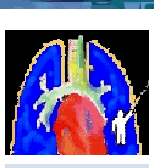Dear Drs Zubieta-
I need your assistance. There is a current controversy regarding the safety of an 11 month old traveling from Lima to 3800m directly. I maintain that the child should go more slowly to that altitude, with a stop for acclimatization at 3000m or so, but if this is not possible, then he can be treated with Diamox, or just go through the symptoms of AMS and get medical help if it becomes necessary. My colleagues in the states are more conservative. Some recommend this child not be allowed to travel to La Paz at all! They worry about HAPE, HACE, heart failure, etc.
Obviously, there are many lowland children traveling to La Paz with their families. Do many get into trouble? What is your advice?
Thank you, and best wishes
Peter



























